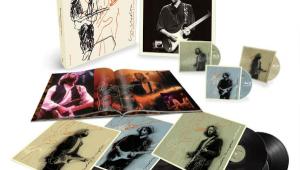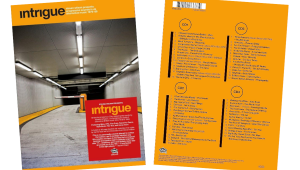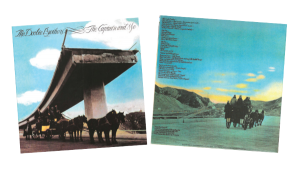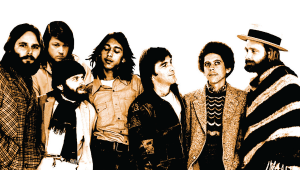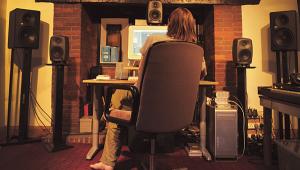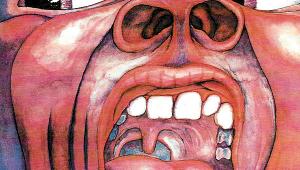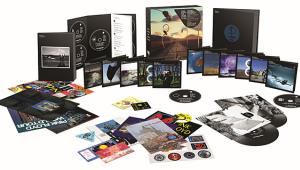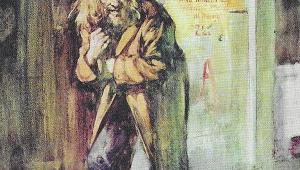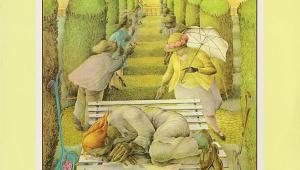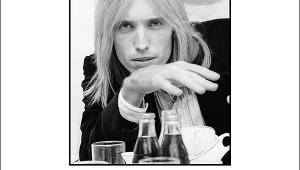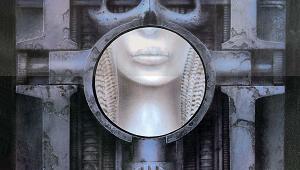The 20th Century’s Greatest Hits Page 2
GUSTAV MAHLER b. Kalischt, Bohemia, 1860; d. Vienna, 1911 Although Mahler was a monumental force in 20th-century music, it wasn't until conductors Bernstein, Kubelik, and Solti recorded his symphonies in the 1960s and 1970s that he found a widespread audience. This post-Romantic expanded the possibilities of the symphonic form (much as Beethoven had done at the beginning of the 19th century), introduced dissonance in his later works, and paved the way for modernism. Symphony No. 8. Soloists; choruses; Chicago Symphony, Solti (Decca). The sheer scale of this mighty "Symphony of a Thousand" signified something new. Solti's 1971 recording, remastered in 24-bit stereo, is still among the most exciting. Symphony No. 9. Berlin Philharmonic, Karajan (Deutsche Grammophon, two CDs). Mahler's last complete work is beautifully played and stunningly reproduced in this "gold edition" of Karajan's live 1982 recording. Complete Symphonies and Orchestral Songs. Various orchestras, Bernstein (DG, 16 CDs). Bernstein's second set of the complete works is thoughtfully packaged and even more consistently rewarding than his first (now bargain priced on Sony).
CLAUDE DEBUSSY b. St.-Germain-en-Laye, France, 1862; d. Paris, 1918 Composing with a transparency and range of color and timbre similar to Impressionism in painting, Debussy opened up new possibilities for a musical world haunted by Wagner's exalted brand of German Romanticism. He created new forms and employed harmonic innovations that influenced virtually every composer who followed. Orchestral Music. Royal Concertgebouw, Haitink (Philips, two CDs). All his most important symphonic works, including La Mer, Nocturnes, Images, and Prelude to the Afternoon of a Faun, are performed by a great orchestra and conductor. La Mer; Nocturnes; Jeux; Rhapsody for Clarinet and Orchestra. Cleveland Orchestra, Boulez (DG). The Cleveland's precision and clarity of sound are ideal for this music, and Boulez's readings are inspired. Pelléas et Mélisande. Von Stade, Stilwell, Van Dam; Berlin Philharmonic, Karajan (EMI, three CDs). Buying this set is a serious commitment, but if you want to hear how Debussy broke with Wagner and changed opera forever, take the leap.
RICHARD STRAUSS b. Munich, 1864; d. Garmisch-Partenkirchen, Germany, 1949 Conservative, pragmatic, and materialistic, Strauss explored, primarily through tone poems and operas, the simple pleasures as well as the ironies and complexities of daily life. Also Sprach Zarathustra; Don Juan; Till Eulenspiegel; other orchestral works. Berlin Philharmonic, Karajan (DG). Written in 1896, Zarathustra was indelibly burned into 20th-century consciousness by its use in Kubrick's 2001: A Space Odyssey, and Karajan and his merry band are awesome in that and the other tone poems here. Salome. Studer, Terfel, others; Deutsche Oper Berlin, Sinopoli (DG, two CDs). His 1905 setting of Wilde's play gets the right blend of voluptuous sound and erotic dementia. An Alpine Symphony; Rosenkavalier Suite. Vienna Philharmonic, Thielemann (DG). Strauss's orchestral depiction of a day in the mountains, complete with wind and thunder, brings the Alps right into your home, then the instrumental suite from his great opera Der Rosenkavalier waltzes you safely back to the comfort of Vienna. Four Last Songs; Orchestral Songs. Schwarzkopf, soprano; RSO Berlin, London Symphony, Szell (EMI). The serenely autumnal final songs (1948) here receive one of their most inspired recordings.
ARNOLD SCHOENBERG b. Vienna, 1874; d. Los Angeles, 1951 Sensing that after Mahler and Strauss there was no new tonal territory left to explore, Schoenberg pioneered atonal and later "12-tone" music. Time has not endeared his works to large audiences, but it has confirmed his role in forging a new 20th-century aesthetic. Transfigured Night; String Quartet No. 2. Stockholm Chamber Orchestra, Salonen (Sony). Schoenberg's arrangement for string orchestra of his early and thoroughly tonal sextet, Transfigured Night, has become his most popular work. Gurrelieder. Soloists; Tanglewood Festival Chorus, Boston Symphony, Ozawa. Chamber Symphonies Nos. 1 and 2. RSO Frankfurt, Inbal (Philips, two CDs). Completed in 1911, before Schoenberg moved beyond tonality, and even more grandiose than Mahler's Eighth Symphony, the Wagnerian-style Gurrelieder calls for an immense chorus and orchestra, five vocalists, and a narrator (here Werner Klemperer of Hogan's Heroes fame). The thornier Chamber Symphonies are among his most important later works. Variations for Orchestra. Berlin Philharmonic, Karajan (DG). The accompanying works by Berg (below) and Webern's early Passacaglia make this disc a good introduction to atonal music.
ALBAN BERG b. Vienna, 1885; d. Vienna, 1935 Like his teacher, Schoenberg, Berg moved from tonality to atonality and 12-tone music. But unlike Schoenberg, he found favor with audiences and influenced both modernists and postmodernists during his relatively brief career. Wozzeck. Grundheber, Behrens, others; chorus; Vienna Philharmonic, Abbado (DG, two CDs). The atonal, angst-ridden 1925 Expressionist opera, still considered one of the century's greatest, gets a hair-raising live recording. Violin Concerto. Perlman; Boston Symphony, Ozawa (DG). His last complete work, written in 1935, perhaps the greatest 20th-century violin concerto, is packaged with the Stravinsky concerto. Three Pieces for Orchestra; Three Pieces from the "Lyric Suite." Berlin Philharmonic, Karajan (DG). Berg's first solely orchestral work and excerpts from his 12-tone Lyric Suite, with its references to his early, unfinished opera Lulu, are packaged with works by Schoenberg and Webern (see above).
- Log in or register to post comments
